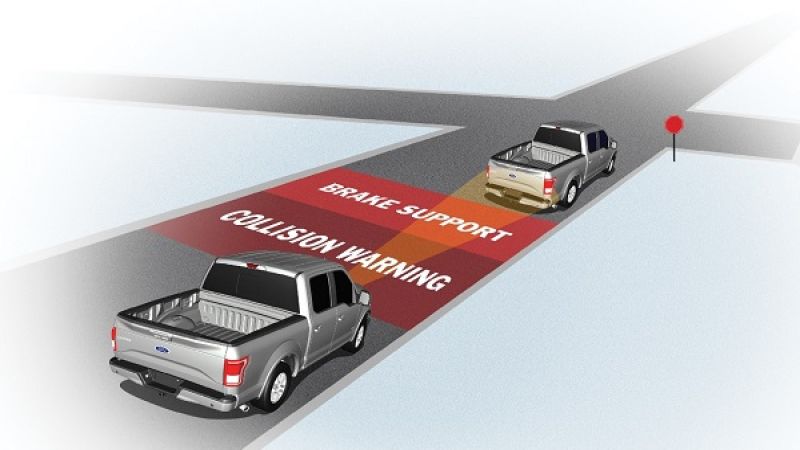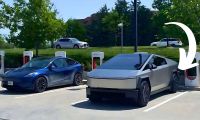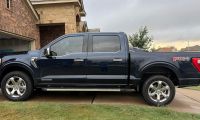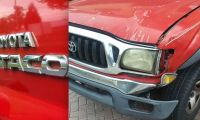Force equals one-half the mass of the car hitting you, times the square of its velocity. This is a truth that cannot be changed by a committee, or mandated away. All of the safety systems in your car will not save you if the mass of the car that hits yours is too great, or if it hits you going too fast. There is good news though. Both of the parts of the force equation are starting to get better and it could mean important things for vehicle safety.
The Safety Formula
That “square of the velocity” part is really the scary factor, though we tend to be more afraid of big vehicles than we do of fast-moving ones. You see, when you double the speed of car in an accident, it is a whole lot worse than doubling the weight (mass actually). That “squared” part is the culprit. Here is how it works. Multiple half the mass of a Camry (about 1600 lbs) times 15 MPH times 15 MPH. You get 360,000 bad things. Double the Camry's weight (mass actually) to say, about the mass of heavy duty Ford F-150 pickup truck, and the accident is exactly twice as bad. However, if you double the speed of the Camry to 30 MPH instead, that accident is now four times worse. I know you don’t believe it, but it is true.
New, Lighter Ford F-150 Will Be Safer For You
The good news about making the new 2015 Ford F-150 lighter is the first of the two things that will be a big help in traffic crashes. The Ford F-150 has been the top selling vehicle – not just truck – for 32 years in a row. There is no other vehicle more likely to hit yours. So making it lighter, as Ford is about to do by making all the painted parts from aluminum, is indeed going to lessen the severity of a lot of crashes. You would do well to encourage all your neighbors who are going to bring home a truck to bring home an aluminum one. Their teenage kid will be driving it once it has a few years on it. You can imagine the rest.
Forward Crash Prevention Systems
More importantly, frontal crash prevention systems are now becoming very commonplace. All of the fancy cars have this as an option now. The affordable Subaru Outback has one of the best systems of all. We are going to go out on a limb here and say that within 5 years the government will mandate that all new cars have such a system.
The way they work is easy to understand. They use either radar or cameras, along with a computer, to see trouble ahead. When the system senses that a crash will occur it starts to alert the driver. Drivers can’t be trusted, as we well know, so the system then applies the brakes to either lessen the severity of the impact, or in some cases, prevent the impact from occurring. This is a very big deal, since even if the system simply slowed the car that was about to hit yours from 30 MPH to 15 MPH, the force of that car hitting you is now reduced four fold (see above). That could mean the difference between a bad day and a funeral.
Combined, the trend towards lighter big vehicles, and systems that stop or slow cars about to crash, will have a profound impact on our safety. Given the choice, wouldn’t you rather that all your neighbors’ vehicles have these two advances?
Related Stories:
What you need to know about the new IIHS crash prevention ratings
The 2015 Ford F150 Could Weigh Under 4,000lbs
Testing highlights the differences between forward collision systems













Comments
Excellent take on safety from
Permalink
Excellent take on safety from a perspective that you don't hear often.